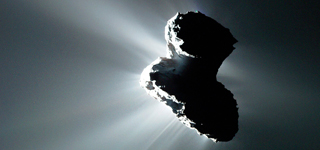Technical Development
Prebiotic Chemical Formation Pathways of Urea and Nucleobases
Co-Investigators:
- John Eiler (California Institute of Technology)
- Evie Harel, Jax Dallas (California Institute of Technology), Graduate Students
- Robert Hodyss (Jet Propulsion Lab, Post-KISS Award)
Overview
Project Goal:
The delivery of key organic volatiles, especially carbon and nitrogen, to nascent planetary surfaces involves a complex history, and recent discoveries of the Rosetta Mission to Comet 67P have shown – unexpectedly – that the salts of ammonia with weak acids such as hydrogen cyanide, formic acid, or hydrogen sulfide, can retain substantial reservoirs of CNOS compounds to temperatures well above the sublimation of water ice. These salts further ‘pre-load’ the N- and C-containing ions in a manner that likely drives further chemical evolution toward prebiotic compounds (such as urea, pyrimidines). This chemistry is presently unexplored, and we are combining quantum chemical tools from theory with experiments using cryogenic surface science instruments on campus and at JPL to unravel the formation and reactivity of salt pairs in the presence and absence of water ice. The results will inform both astronomical and solar system remote sensing search for such materials, and the tools needed to examine the complex organic chemistry of sample return missions to the asteroid belt and outer solar system.

